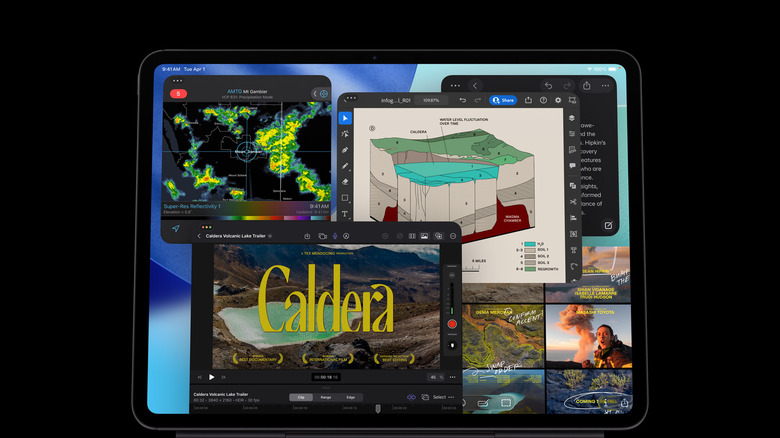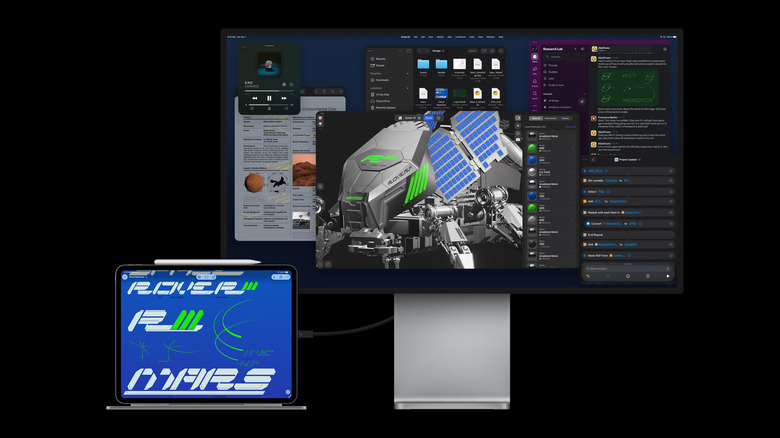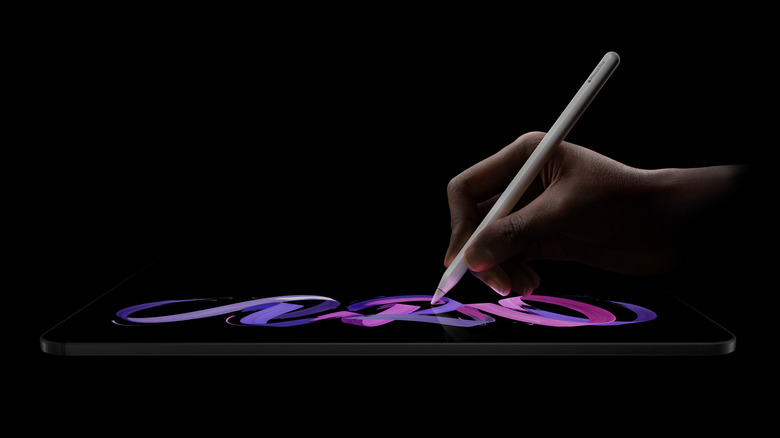The New iPad Pro M5 Is Apple's Most Powerful Tablet Yet, But I Still See The Same Old Problem
The new iPad Pro is here, and with it, the M5 chip, giving the iPad processing power on par with Apple desktops and laptops, at least on paper. Apple's press release on the launch notes that the new iPad is multiple times faster than previous generations, giving the end user more bandwidth to edit photos, make video calls, and draw on the screen.
Additionally, the press release harped on the iPad's ability to play nice with generative AI (which is a whole can of worms in and of itself). Hardware-wise, the iPad Pro is paired with 12GB of RAM, and is available in 256GB, 512GB, 1TB, and 2TB configurations. It's priced starting at $999 and is available from October 22nd.
Generative AI is another issue entirely, but the Apple M5 chip, storage up to 2TB, and a price that isn't entirely egregious (at least compared to other Apple products) is all well and good. No one is going to say that a faster chipset and more horsepower is a bad thing. However, the introduction of the M5 into the iPad family exacerbates a problem the iPad has had from the beginning.
Good, but not good enough
I've been an iPad user since it launched all the way back in 2010. I use my 7th-generation iPad Mini every day, and I've used a number of iPad Pros over the years, and I love them. They all have the same problem, they don't hold a candle to a proper laptop or desktop. The form factor and inherent limitations of even the newest iPadOS 26 operating system seems like it will hold back the power of the M5 chip. Multitasking is all well and good, and getting your hands on an M5 chip is certainly a boon, but are you really going to edit a whole movie on an iPad with only 12GB of RAM? Probably not.
Having an iPad Pro handy when you're on the go is an incredibly useful stopgap for when you don't have the time, space, or inclination to sit at a desk or get your laptop out. It's great for taking calls, doing some light creative work, and answering emails. The new iPad Pro might be one of the best tools, period, for that kind of work. But the very fact that it's a tablet with limited software, hardware, and peripheral support puts it firmly into the "secondary device" category. You can't replace your iMac or Mac Studio with a tablet just yet.
Still a secondary device
Compared to the rest of Apple's mobile lineup, the new iPad Pro is undoubtedly a powerhouse, and the M5 chip is a nice feather in its cap. However, as you move into the laptop end of Apple's repertoire, the M5-equipped iPad Pro gets outclassed pretty quickly. A base-model M5-equipped MacBook Pro has 16GB of RAM (almost a necessity nowadays for serious editing work) and a bigger 14-inch screen. Ports-wise, the MacBook Pro has three Thunderbolt ports, an SD card slot, a headphone jack (remember those?), and an HDMI port. If you are willing to drop more cash, that RAM can be upgraded to 25GB. It's way more compatible with peripheral devices than any iPad out there, Pro or not. There's still no replacement for a proper Apple-based workstation than a conventional laptop or desktop.
The new M5-equipped iPad Pro looks good, and it will probably perform incredibly well (within its inherent limitations). Unfortunately, those limitations keep the iPad Pro outside of the primary device sphere. It will complement your Apple laptop ecosystem, but it won't replace it.


